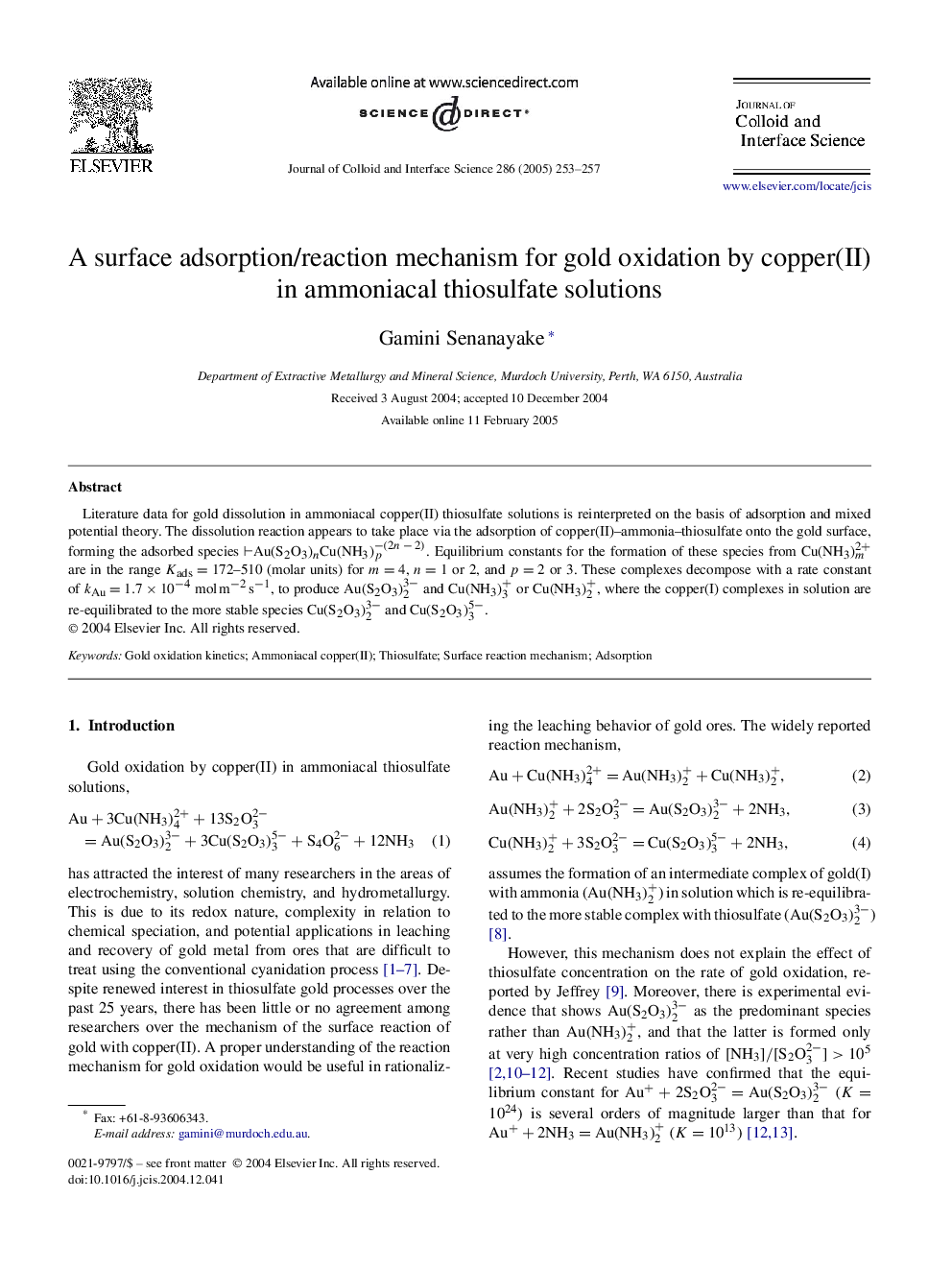| Article ID | Journal | Published Year | Pages | File Type |
|---|---|---|---|---|
| 10377696 | Journal of Colloid and Interface Science | 2005 | 5 Pages |
Abstract
Literature data for gold dissolution in ammoniacal copper(II) thiosulfate solutions is reinterpreted on the basis of adsorption and mixed potential theory. The dissolution reaction appears to take place via the adsorption of copper(II)-ammonia-thiosulfate onto the gold surface, forming the adsorbed species â¢Au(S2O3)nCu(NH3)â(2nâ2)p. Equilibrium constants for the formation of these species from Cu(NH3)2+m are in the range Kads=172-510 (molar units) for m=4, n=1 or 2, and p=2 or 3. These complexes decompose with a rate constant of kAu=1.7Ã10â4molmâ2sâ1, to produce Au(S2O3)3â2 and Cu(NH3)+3 or Cu(NH3)+2, where the copper(I) complexes in solution are re-equilibrated to the more stable species Cu(S2O3)3â2 and Cu(S2O3)5â3.
Related Topics
Physical Sciences and Engineering
Chemical Engineering
Colloid and Surface Chemistry
Authors
Gamini Senanayake,
